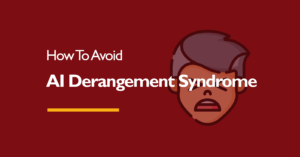Technical writing is a user-focused writing niche that provides information on specialized topics. This writing genre focuses on explaining a concept or process, usually jargon-free so that others can understand it.
As a technical writer, your writing will help readers navigate software applications, company policies, regulatory standards, and medical procedures.
However, technical content creation involves strictly adhering to technical guides while expressing the content in a familiar language for readers.
In this article, I’ll share some tips for creating valuable technical content that resonates with the end user.
Why is technical writing so important?
Technical writing will always be in demand. Due to the explosive demand for user-centric content, the U.S. Department of Labour Statistics forecasts that jobs in technical content writing will rise at a 12% rate faster than other writing roles.
The reasons for this are clear: More organizations are recognizing the need to hire staff writers or outsource their content needs to ghostwriters.
These professionals are responsible for crafting how-to guides, white papers, company documents, Service Level Agreements (SLAs), API documentation, and more.
The best technical writers usually leverage experiential knowledge in a particular field to create valuable resources. This reiterates the fact that you need to specialize in a particular niche in order to succeed as a technical writer.
Most users will have to refer to technical documentation online to install software on their computers or resolve technical issues.
Technical writers can also work in a variety of industries, but the most lucrative jobs are concentrated in software and tech-related fields.
Examples of technical documentation
Here are five examples of technical documentation you’ll come across more often. In case you’re wondering how to begin, you can use these as an inspiration for creating a portfolio of technical content.
User manuals
User manuals or how-to guides are instructional materials often written for novice end-users to help them understand complex products, such as electronics, smart devices, and SaaS tools.
Technical writers often work with engineers, product designers, or programmers to highlight key issues and features.
As a ghostwriter, I have created several articles to help users navigate using new software or accessing features and updates.
Case studies & Whitepapers
Case studies and whitepapers are industry-specific documents that use real-world examples and success stories to portray an organization’s expertise and generate leads.
Case studies describe a specific application of the company’s products or services by an external entity, highlighting key takeaways and using data to buttress the company’s strengths.
On the other hand, a whitepaper addresses a specific issue in detail. For example, it could address security or the underlying architecture.
Software installation guides
Documentation must include procedures for installation, usage, and troubleshooting. Technical writers collaborate with software developers to create detailed workflows, video tutorials, FAQs, and other helpful information.
As a technical writer, you must have a thorough understanding of the software in order to assist users with the installation process.
Using tools like Bit.ai, GitHub, or Dropbox Paper, you can create, publish, and update an extensive installation guide. Tech companies also publish blogs and YouTube videos to show users how to perform tasks using the software.
API Documentation
API documentation is a guide that helps your customer’s developers easily interact with a product’s code to implement an API effectively.
This document contains instructions and tutorials to ensure smooth integration with other APIs on the web or software.
Today, you’ll find this kind of documentation in nearly all software and SaaS products.
Technical Writing: Dos and Don’ts
As a technical writer, you get to do important work and earn significantly. While creating these kinds of content, here are a few do’s and don’ts you should pay attention to.
The Dos of technical writing:
#1. Define your target audience
How you structure content for beginners will differ from how you write for mid-level or expert readers within a specific niche. First, define who you’re writing for, and then tailor your content to suit that audience.
Knowing your audience well will also help you conform to a specific writing style and tone of voice. You’ll know whether to give a thorough description of the process or simply go straight to the point.
#2. Incorporate visual aids and diagrams
Quality technical content uses tables, lists, and figures in-between text to make the subject easier to understand. If you’re using visual aids, confirm the validity of the provided data before you embed it.
Using visuals can reinforce what’s not clearly defined in text format. When you add any image, table, or video, provide captions underneath so readers understand what they’re looking at.
#3. Be consistent with style
The only way to create original content is to be consistent with your style. Even when you’re creating technical content, let it sound like you.
While it’s okay to seek guidance from established writers online, you’ll only hurt your website’s SEO ranking by plagiarizing other people’s work. Choose a writing style and stick with it.
#4. Optimize content for search engines
Never forget the role SEO plays in content marketing. Optimizing your technical content so that Google can find you easily is necessary, especially if you want higher visibility rates.
Technical content optimization involves optimizing URLs, linking to authoritative sources, and using relevant keywords. Additionally, embracing SEO for technical content will help to position brand-specific information in front of users who actually need it.
#5. Format properly
Use lists, heading tags, and other elements to format your writing for increased readability. You should describe a process by presenting them in steps rather than writing entire paragraphs.
Also, ensure that you present your ideas consecutively so that you don’t confuse readers. This is especially important when writing how-to guides, user manuals, and installation guides.
#6. Get editorial feedback
You need an adequately established feedback mechanism to clean up your work just before you publish. You can use Grammarly to automate the editing process and get a professional eye to look at your work.
I’ll always say, never publish your first draft. Good technical content looks better after it’s passed through an editor’s desk.
The Don’ts of technical writing:
#1. Avoid jargon or vague language
You’ll hurt the purpose of the content when it’s riddled with jargon or technical language. Highlight pain points that your end-users might face and address their challenges or questions directly.
When you use acronyms, define them on first use. This is important because any acronym could mean different things in different industries.
E.g., NBA (National Basketball Association) and NBA (National Bar Association).
You can always abbreviate for brevit,y but do not use abbreviations excessively. And where words cannot suffice, use imagery to tell the story.
#2. Avoid plagiarism
Creating original content is key to positioning yourself as an authority in the field. You can do this by telling stories, creating feasible instances, and linking to authoritative sources.
Ensure that your writing is plagiarism-free by running it through tools like Duplichecker and Prepost SEO. When you include information from an external reference, be sure to credit the source.
#3. Avoid hearsay, stick with facts
Your facts must be accurate, up-to-date, and relevant to the subject. Don’t just fabricate statistics to support your position—readers trust you to provide them with reliable information.
If you need to consult an expert in the field to get helpful information, go ahead. One way to help Google recognize your content as valuable is when you consistently offer original, quality content that’s not available elsewhere.
#4. Don’t use an informal tone or personal opinions
Technical writing is not the place to display personal bias or opinion, and this should be reflected in the tone of your work. So, take your time to gather the facts and present them constructively.
Although, as earlier stated, it’s important to have a sufficient understanding of the topic you’re writing about. Even if this is not the case, conduct in-depth research so you can always present accurate content.
#5. Don’t trust AI tools
I hate to be the one to say it, but technical writing is not the place to experiment with AI. It’s tempting to use AI writing tools to publish more content often, but there are many reasons AI content may not be great for SEO.
Instead of churning out low-quality, unreadable content using AI, hire the best professional technical writers to get the job done well.
At RoninPoint, we provide excellent technical writing services to keep your readers furnished with premium content.
Who wrote this?
Iruoma Chukwuemeka is a serial writer. She creates engaging content with best SEO practices for clients who need reliable hands on their writing projects. She's also got an appetite for information and books.
- Iruoma Chukwuemekahttps://roninpoint.com/author/iruomachukwuemeka/November 25, 2024
- Iruoma Chukwuemekahttps://roninpoint.com/author/iruomachukwuemeka/July 25, 2024
- Iruoma Chukwuemekahttps://roninpoint.com/author/iruomachukwuemeka/May 11, 2024
- Iruoma Chukwuemekahttps://roninpoint.com/author/iruomachukwuemeka/March 15, 2024









